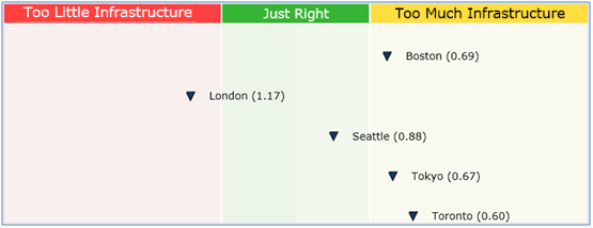Compute Efficiency Index (CEI)
Compute Efficiency Index (CEI)
#290060
The Compute Efficiency Index (CEI) provides an accurate measurement of how well an organization is leveraging the infrastructure available in its environment with a single metric. CEI reflects the amount of infrastructure required to run the workloads subject to the requirements and specified
If a virtual or cloud environment has an efficiency index of 1.0, this means that the infrastructure capacity and workload demands are perfectly aligned (i.e. "Just Right"), and based on policy, the workload levels and patterns stack up to exactly use the available capacity.
An efficiency index of 0.75, for example, means that the workloads could be safely hosted on three-quarters of the capacity currently deployed (i.e. "Too Much Infrastructure"), signifying that the environment is over-provisioned and that there is space for new workloads and density can be safely increased.
An efficiency index greater than 1.0 means that the environment is beyond full, meaning it is under-provisioned and new capacity must be introduced (or demand removed) in order to alleviate the problem (i.e. "Too Little Infrastructure").
Considering this concept with future-state analysis, it is possible to compute the efficiency index of an environment at a future point in time based on trends,
